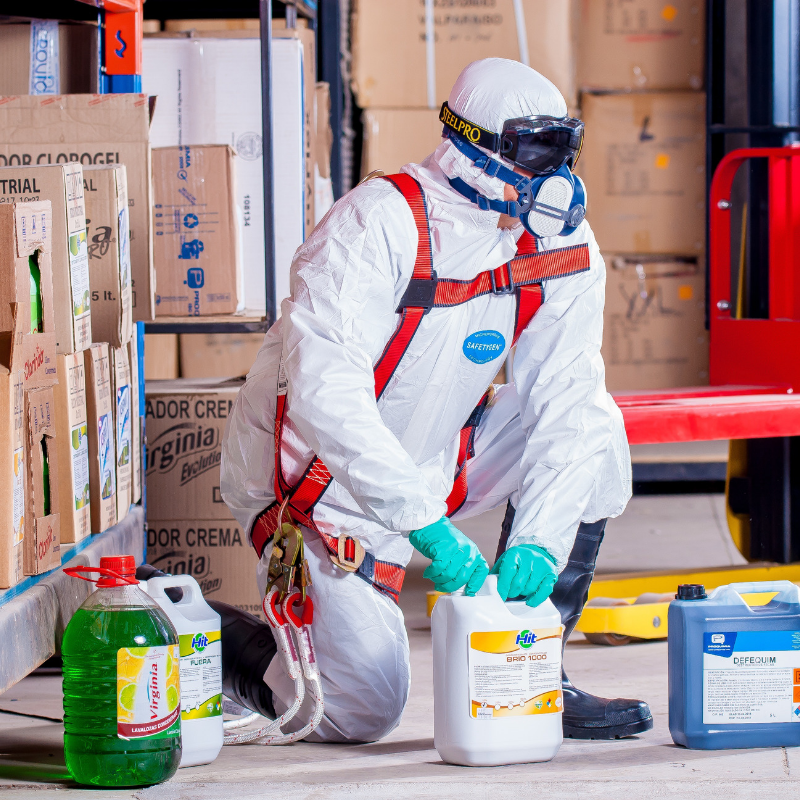OSHA Fines of $1.7 Million and Possible Jail Time
What happened?
It's any business owner's worst fear, an employee is killed on the job.
For Shawn Purvis, the owner of Purvis Home Improvement in Maine, the situation is looking pretty bleak.
Purvis Home Improvement is roofing contractor.
This whole situation began following the death of an employee in Portland, Maine on December 13th, 2018.
The OSHA inspection that followed revealed that Purvis had knowingly failed to ensure the use of fall protection by his employees at both the Portland worksite and a separate worksite in Old Orchard Beach, Maine.
Now, for those of you who are new to the way OSHA citations work, knowingly violating a rule or repeatedly violating the same rule will get the business in a lot of trouble. The types of violations are below.
The 6 Types of OSHA Violations
1. De Minimus Violations - Technical violations that have no direct impact on safety.
Example - A ladder with 13 inches between rungs, rather than the required 12.
2. Other-than-Serious Violations - Violations that would not normally cause death or serious injury. The maximum penalty for these violations is $7,000 but inspectors can choose not to levy a fine or reduce the penalty by as much as 95%.
Example - Failure to provide copies of safety regulations or post required documentation in work areas.
3. Serious Violations - These are violations that occur when an employer knows of a situation that has a definite chance of causing serious injury or death and does not remedy it. The penalty may be up to $7,00 for each serious violation but can be adjusted depending on the seriousness, employer's history, the size of the company, etc.
Example - Failure to require employees who carry heavy loads to wear steel-toe boots.
4. Willful Violation - These are the most serious category and are reserved for intentional violations os OSHA rules that show a disregard for employee health and safety
The minimum penalty for a willful violation is $5,000 and the maximum is $70,000. If an employee is killed, the violation becomes a criminal offense with a maximum fine of $250,000 for an individual or $500,000 for a corporation. An individual who is convicted of a fatal willful violation can be imprisoned for up to 6 months.
Example - A fatal crushing accident because the employer did not implement adequate safety procedures for equipment that had caused prior crushing injuries.
5. Repeat Violations - If a company is cited for a particular violation and the follow-up inspection reveals another similar violation, OSHA inspectors may cite the employer for a repeated violation. The maximum fines for these is $70,000.
6. Failure to Abate Prior Violation - When an employer receives a violation citation, the citation includes a date by which the employer must remedy the situation. If the employer does not do so on or before the specified date, it may be liable for a fine of $7,000 per day from the day after the specified date until it remedies the condition.
So how did it get to $1.7 Million and potential prison time?
It turns out, Purvis had a bit of a history when it came to OSHA violations. The company had also been cited for seven violations of fall protection requirements dating back to 2006.
Following the 2018 fatality, OSHA inspectors found the Purvis knowingly failed to ensure the use of fall protection by his employees at the worksite.
Due to Purvis's knowledge of the hazard and required safeguards, along with an extensive history of violations, OSHA cited him for a whopping 13 egregious willful violations - one for each exposed employee per job site.
The maximum allowable fine for each egregious willful violation is $132,598.
$132,598 x 13 = $1,723, 774
In addition to these citations, OSHA also fined Purvis for failing to provide fall protection training to employees as well as exposing them to electrocutions and eye hazards.
On April 5th of 2019, a Portland grand jury indicted Purvis for manslaughter, charging that the repeated violations of fall protection standards led to the employee's death.
What can you do to prevent this tragedy at your company?
Falls are the leading cause of death in the construction industry.
As we wrote about in an earlier article, the Fall Protection Standard is also the most common OSHA standard for employers to be issued citations on.
From the timeline of events, it appears that Pervis Home Improvement had a record of not valuing employee safety.
To be in compliance in fall protection, you need a written program and you need to uphold that program to either state or federal standards, which can get pretty detailed.
However, training employees and supporting the program through providing clear instructions, setting expectations, and ensuring the right equipment is available are all the ways that the program really can gain traction.
For any employer who expects employees to work at heights, enforcing the values of conducting that work safely isn't just about compliance, it's a matter of life and death.
A fall happens in an instant, and it is most employer's worst nightmare.
Take precautions to safeguard your employees, yourself, and your business by promoting fall protection.



Leave a comment
All comments are moderated before being published.
This site is protected by reCAPTCHA and the Google Privacy Policy and Terms of Service apply.